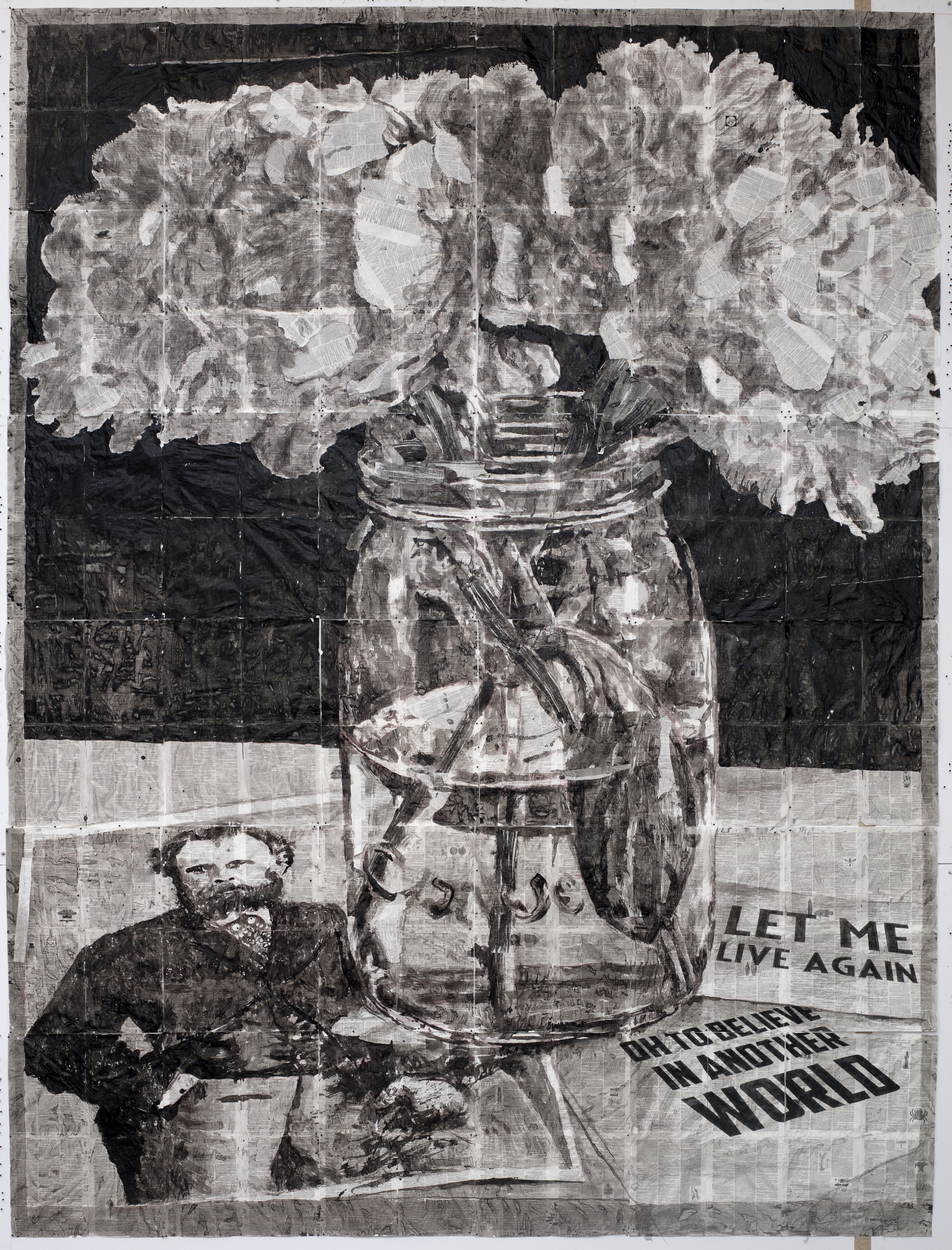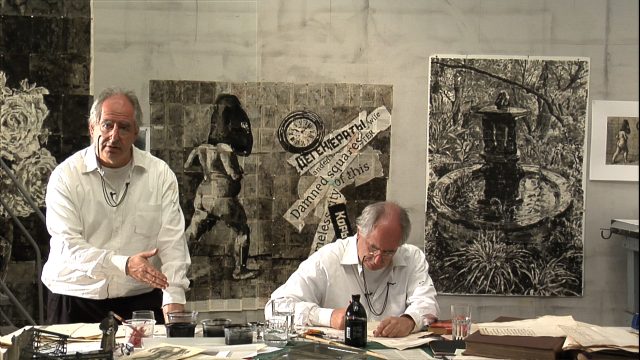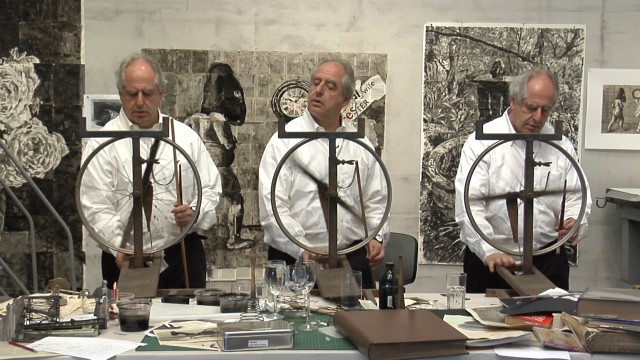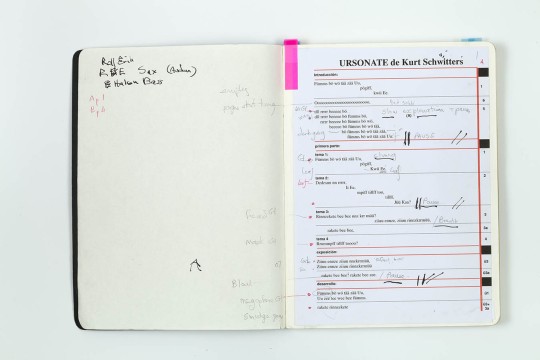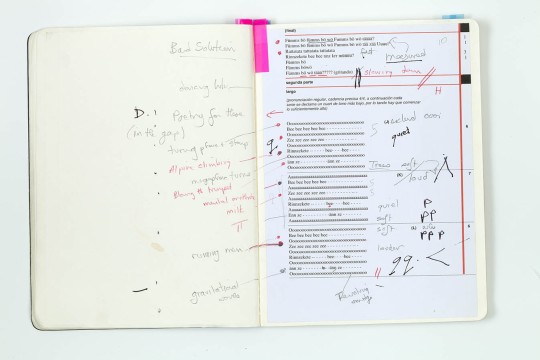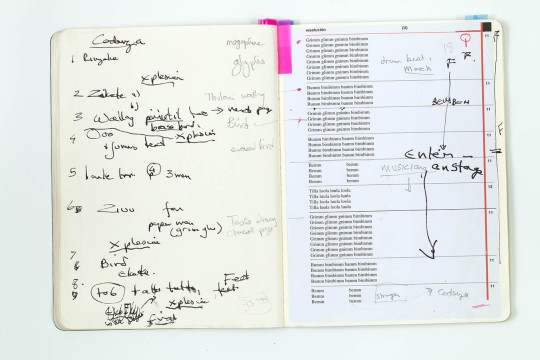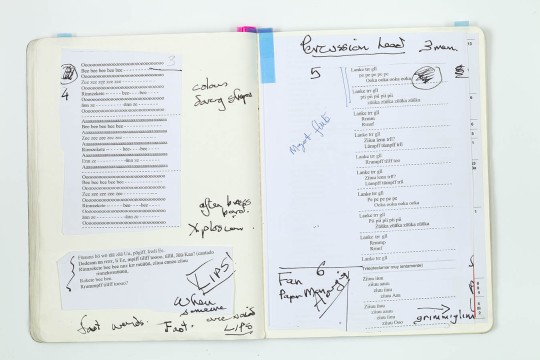William Kentridge’s lecture given at the School of Oriental and African Studies (SOAS) at the University of London in October 2016, and entitled Enough and More than Enough: Performing the Drawing contains a conclusion in its final paragraph that is both surprising – given the journey Kentridge has taken us on – yet, on reflection, completely congruent with Kentridge’s overall vision:
“Why continue with these gestures, with these drawings, these words, in the face of their imminent failure? Because without some idea of utopia, of a rescued world implicit not just in these gestures but in the act of making a drawing, a performance, a speech – without this we feel a gap, a hollow. There is something missing: the drawing is a solace. The drawing makes us more than ourselves, ourselves but something beyond who we are. However stupid, stumbling, repetitive, unclear it is, the drawing in its making both demonstrates this need to be more than we are, and shows its possibility.” (Kentridge, 2016)
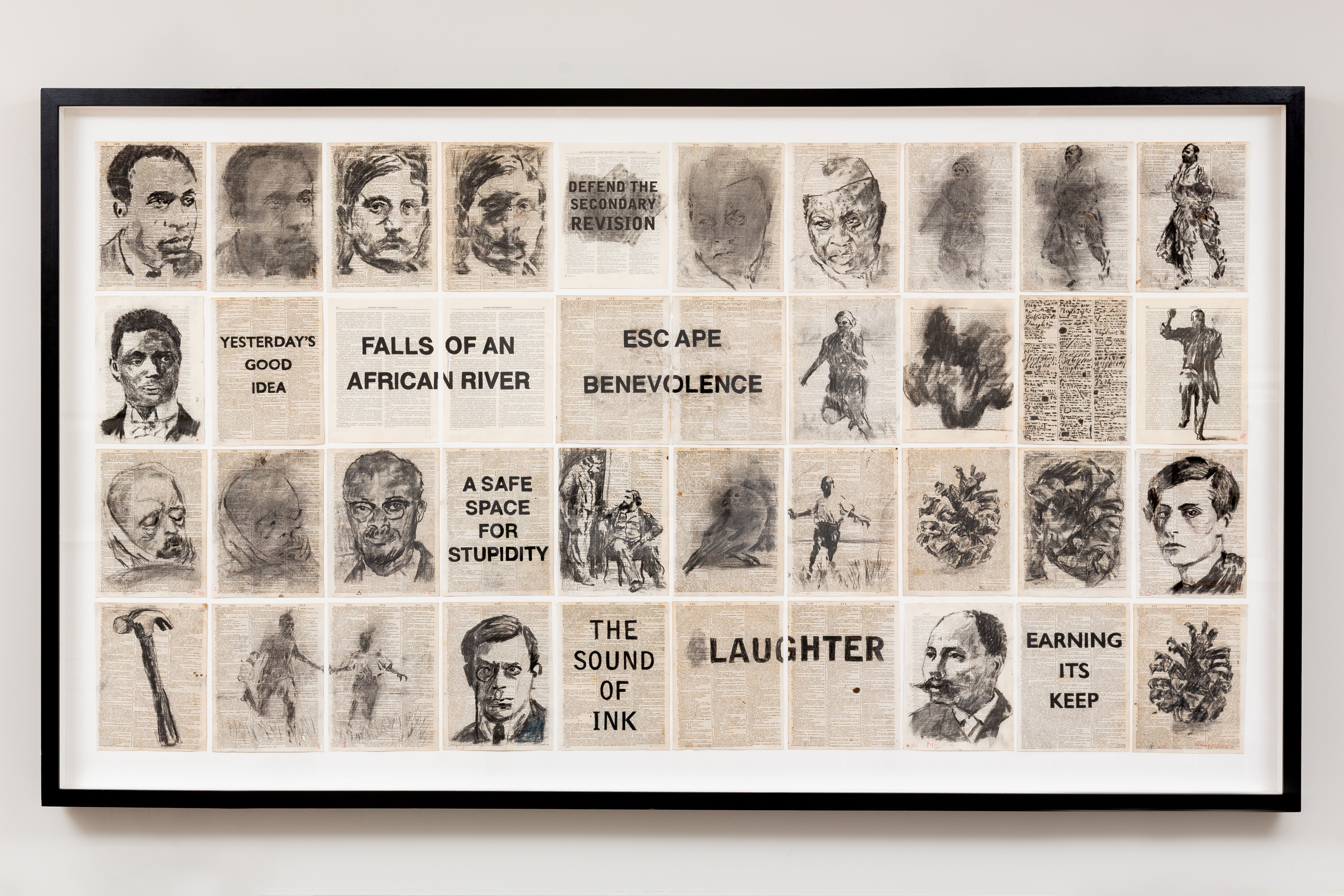
Why surprising?
Well, in the context of the lecture, and in the context of the broader sweep of his work, Kentridge embodies, like few other artists, the spirit of the post-structuralist notion (originating from Heidegger but radicalised by Derrida) of erasure. Erasure, or the Heideggerean ‘sous rature’ is the key philosophical stratagem utilised by post-modernism to undo the various ‘philosophies of presence’, which in turn seek to undo and unmask and unmake the enlightenment quest for certainty and the master-narrative.
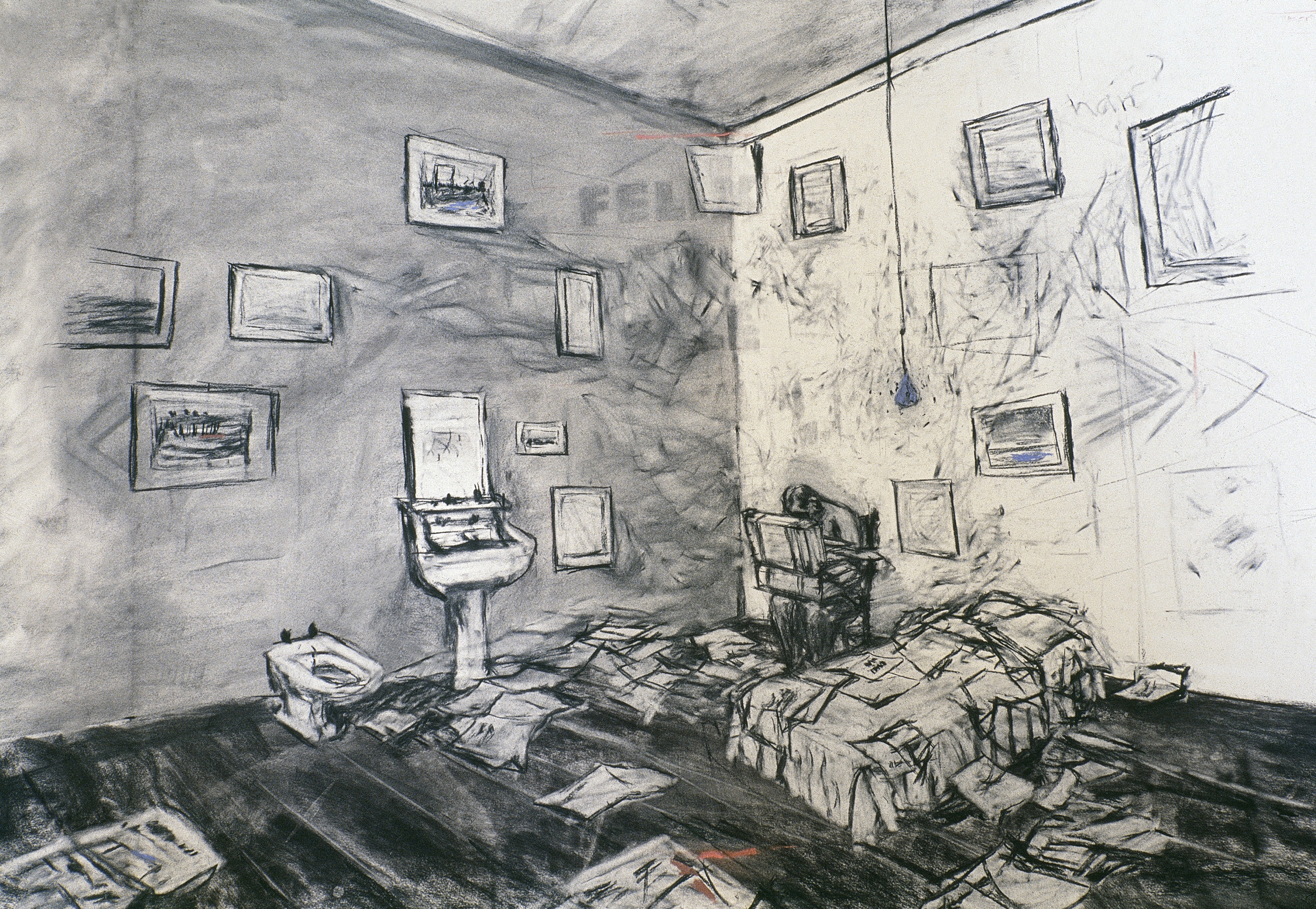
In Heidegger’s original formulation of ‘sous rature’ the written form of the word with the line deleting it while retaining it at the same time, such as retaining, expresses both the simultaneous statement and its undoing, the assertion and its questioning, the image and its trace. Heidegger’s philosophical point is of the inadequacy yet necessity of the word to express the underlying concept. As such, it pointed to the inevitable gap between the signifier (word) and the signified (the concept it represents).
Jaques Derrida, in his deconstructive attack on structuralism and the ‘philosophies of presence’ radicalised this notion to argue that this gap, or elision, or slippage, exists in all writing. Determining meaning, therefore, is not in seeking to tighten the gap between signifier and signified, but in further opening this gap, and constructing meaning through difference, through what is ‘not said’, through the trace of the multiple erasures that undermine all searches for the certainty of presence. There is, for Derrida, no possibility of ‘presence’ beneath or beyond the text. It is not just a particular word that needs to placed “under erasure”, but the whole system of signification itself. There is no ultimate source of the “thing in itself” that can be grasped with any certainty, there is only the free play of endlessly multiplying possibilities of interpretation.
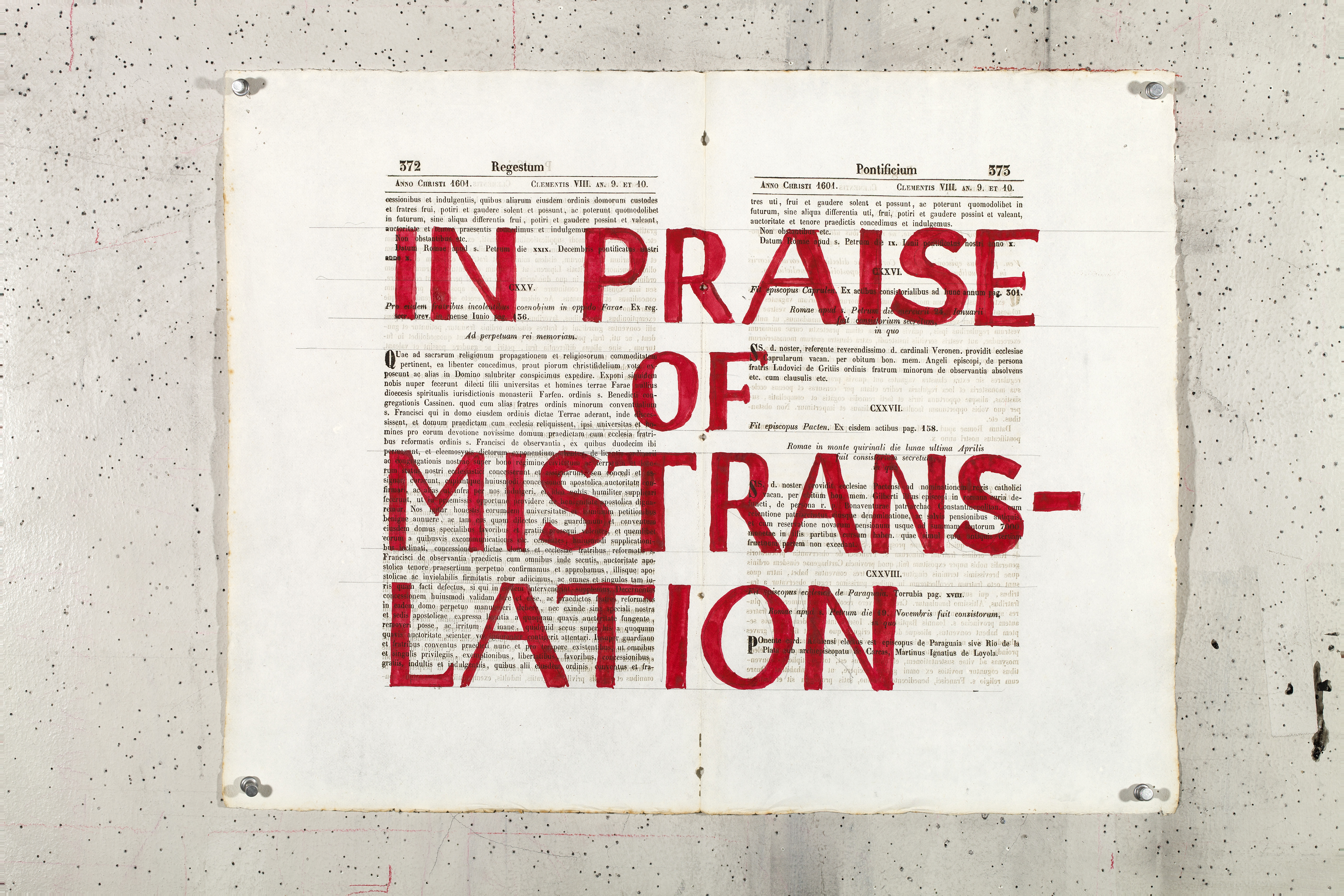
The ethical outcome of this posture is a suspicion of all master narratives – in Lyotard’s words, a “war on totality”. Victims of this suspicion include the humanist quest for an idea of utopia. All historicising of utopian politics is, almost by definition, an expression of totality. From the master narratives of liberal humanist progress seen in the French revolution, to the utopian refiguring of time and history in Lenin’s and Mao’s and Pol Pot’s grand visions of post-capitalist revolutionary futures, to the fascist triumph of the ‘ubermensch’, all historicising of utopian visions leads, in this analysis, to terror. Terror that must be undone, not by counterpoising an alternative totality, but by undoing totality itself.

Kentridge has defined his work by the technique of erasure. Using the palimpsest of charcoal iteratively drawn and erased, he creates works that leave the shadow or shade of the erasure as the ghost of the past, the trace of the former, the shadow on the walls of the cave. His extravagant public artwork, “Triumphs and Laments” on the banks of the Tiber in Rome takes this technique to a new level. Created by high-pressure washing of five meter high images into the grime and fungus on the retaining walls of the Tiber, stretched over an epic 500 metres, the work reminds us continually of the ephemerality, fragility and historicity of not only the artistic project, but of life itself. The images so carefully crafted and beautifully etched, are destined to self-erasure, as the grime and fungus re-assert their creeping presence over time. Erasure is an ever-present reality that marks life as transient and fleeting; as undone even as it is done.
Kentridge practices erasure not only in his artistic techniques, but pushes the boundaries of this beyond the page by erasing the boundary between artist and artistic production. In many key instances in his work, Kentridge himself is the production, the work of art. This is not the traditional artistic conceit of self-portraiture, but is something more. Neither is it narcissistic; there is, in the short films in which he appears, or his Norton lectures which are a deconstructive analysis of the artist at work in the studio, or even in the giant Kentridge hands which appear projected on the backdrop of his staging of the Berg opera, Lulu, a kind of ironic self-erasure, seen in the reversals and repetitions and mimetic gestures and satirical representations of his figure, face or features.
In the SOAS Lecture, Kentridge repeats this artistic strategy with words as well as drawings.
In a lingual gymnastics, analogous to the best of a jazz-scatting-riff, he performs with voice and image:
“Drawing a pigeon”
(Rakete AAA
Rakete BEE
Rakete rinnzekete
Rakete rinnzekete
Rakete rinnzekete
Lanke trr gll
Lanke trr ruumpff
Fumms bö wö tää zää Uu
Nail
Panic
Ed Pause
Phrase back course
Sense hear can you
Make close the gap
To leap
Have you heard the rumours?
Have you heard the rumours?
Have you heard the rumours?
No, but I believe them.”
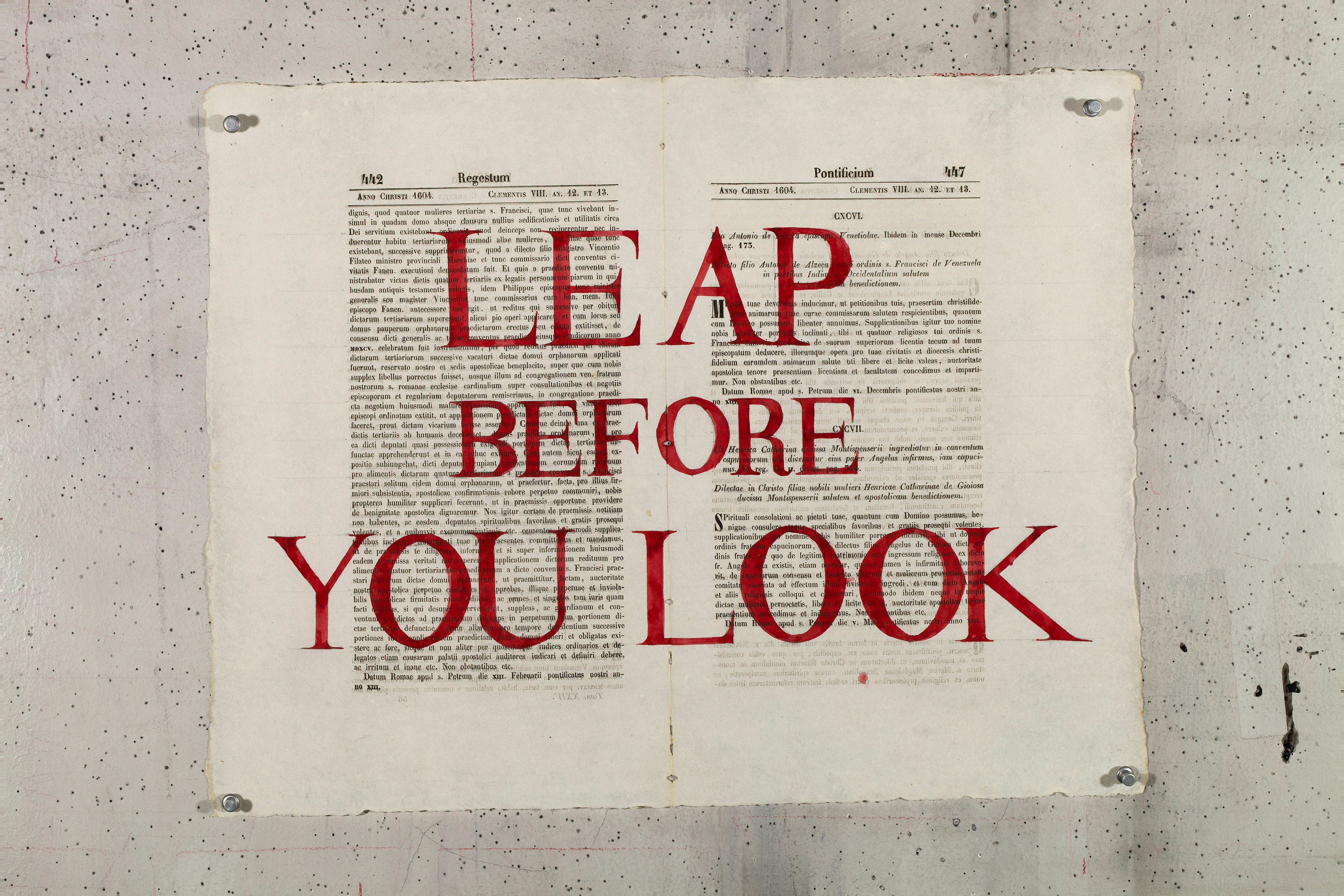
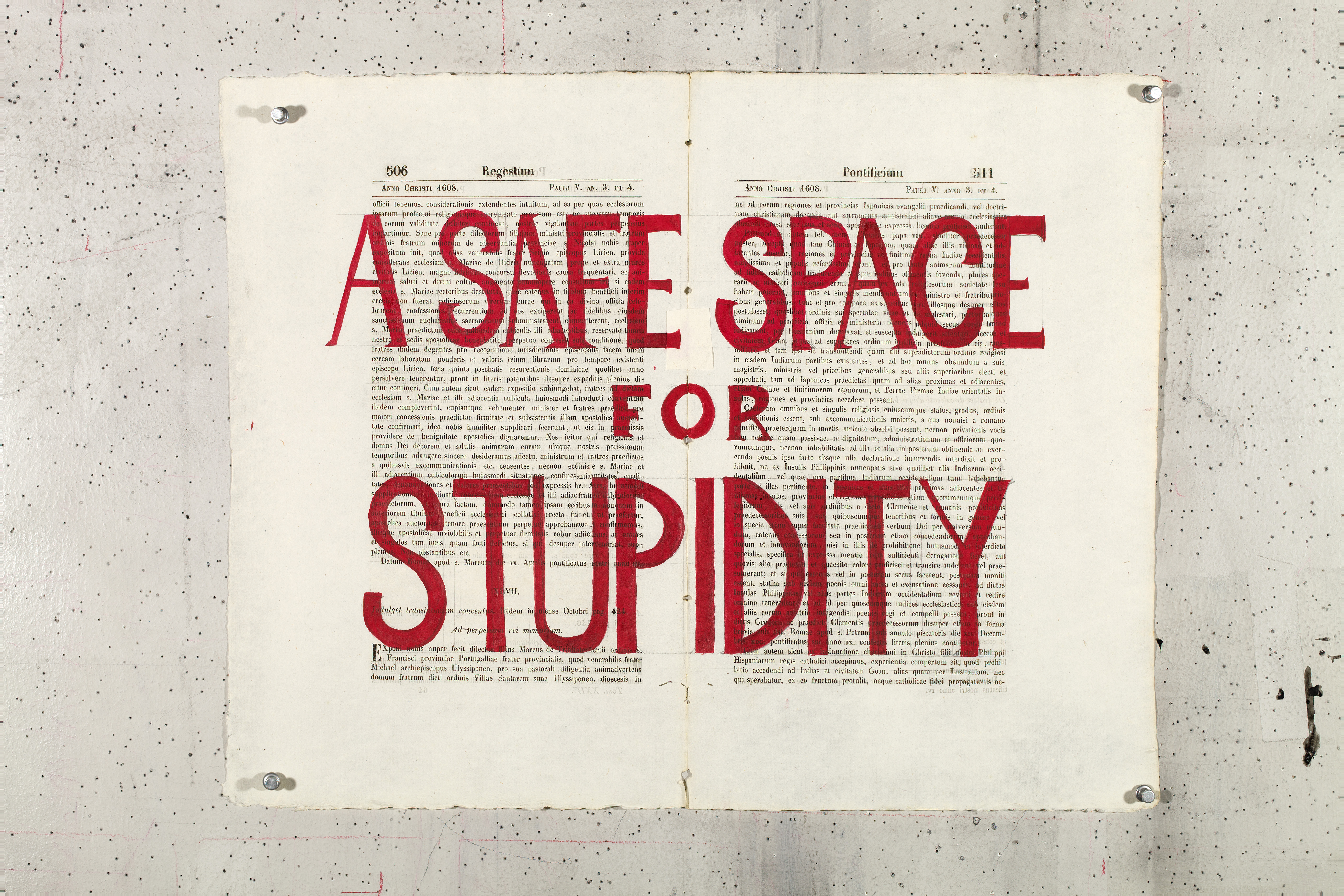
Note the line: “Sense hear can you?” Even as Kentridge undoes language and structure and image and sense, he seems to plead with us to understand, to “hear sense”. He seems to be pleading, in contrast to Derrida, for us to “close the gap”, not make it wider. And how do we do this? We “leap”. There is no secure footing, no solid purchase, no sure foundation. What we are and what we are to become is to be grasped and created in ‘the leap’ that will ‘close the gap’ that will allow us to ‘hear sense’. The possibility of making this leap, of closing this gap, of making sense of the erasure, is a rumour, it remains elusive and ephemeral, but it is a rumour that Kentridge believes even if he has not quite heard.
“Have you heard the rumours?
No, but I believe them.”
So Kentridge’s conclusion is surprising. Here is the artist most fully expressive of the politics of erasure, and yet he refuses to pursue the path of cynical and ironic detachment, of ironic play that undercuts the ground for moral action. Kentridge is a humanist, a politically engaged and ultimately, an utopian artist and thinker.
But the power, not only of his work but of his reflections on his work, is that he helps us to reconfigure and sustain an utopian vision and a sphere of ethical practice in such a way that it avoids the pitfalls of the totalising narratives of terror of the enlightenment quest for certainty.
Why is this important? Because, as Oscar Wilde said,
“A map of the world that does not include Utopia is not worth even glancing at, for it leaves out the one country at which Humanity is always landing. And when Humanity lands there, it looks out, and, seeing a better country, sets sail. Progress is the realization of Utopias.”
(Cited in Rutger Bregman, Utopia for Realists, 2017)
For Kentridge, and this is critical, it is precisely in uncertainty, in undoing, in erasure, in absent presence, in stumbling and bumbling and scatting and leaping in faith to close the gap that we are able to find and build the outlines of an utopian future, of something that “makes us more than ourselves”, that takes us “to something beyond who we are”. The stratagems of erasure are mobilised precisely (or imprecisely) to make a bold claim about a nascent and still-to-be-born humanist utopia. Utopia is to be grasped precisely in “stupid, stumbling gestures”, rather in than in the conceit of confidence and certainty.
And this, knowing Kentridge’s real engagements in the fractured and fragmented and sometimes hopeful sometimes hopeless struggles of his South Africa, makes sense.
To end with Kentridge’s own words:
“I have never tried to make illustrations of apartheid, but the drawings and the films are certainly spawned by and feed off the brutalised society left in its wake. I am interested in a political art, that is to say an art of ambiguity, contradiction, uncompleted gestures and uncertain endings. An art (and a politics) in which optimism is kept in check and nihilism at bay.” 1
1 Statement in William Kentridge: Drawings for Projection. Four Animated Films. Goodman Gallery, Johannesburg, 1992. Quoted in William Kentridge, Carolyn Christov-Bakargiev. Société des Expositions du Palais des Beaux-Arts de Bruxelles: Brussels, 1998.
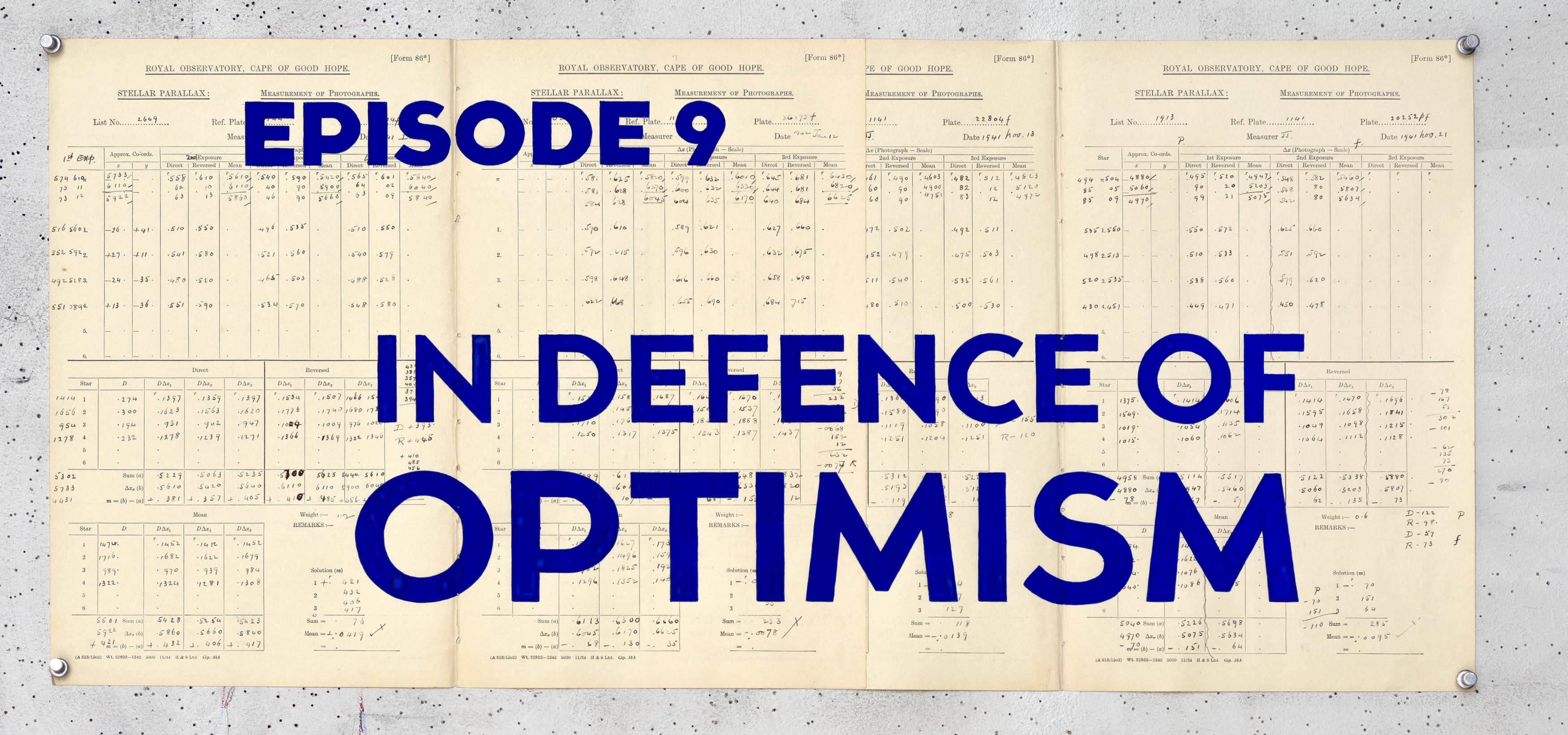
Robin Petersen, August 2023
